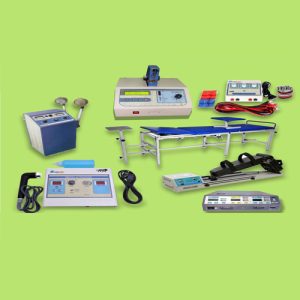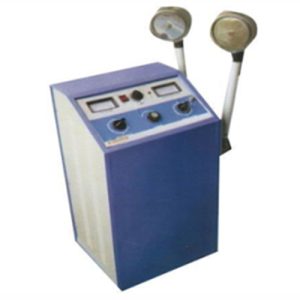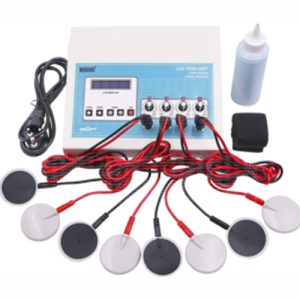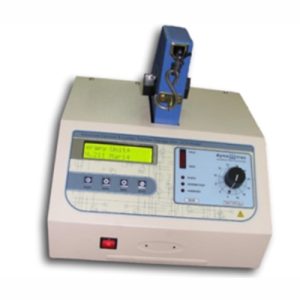Physiotherapy
- Physiotherapy is treatment to restore, maintain, and make the most of a patient’s mobility, function, and well-being. Physiotherapy helps through physical rehabilitation, injury prevention, and health and fitness. Physiotherapists get you involved in your own recovery.
- A Physiotherapy session encompass manual therapy, advising and educating the patient.
- Physiotherapy can help a patient of any age to manage further pain and to fend off upcoming injuries or Diseases.
- Getting Physiotherapy (conditioning) if you have got an injury, or persistent pain that influences how you function every day. A doctor may refer you to Physiotherapy after surgery such as a hip replacement, or an event such as a heart attack or stroke.

Physiotherapy Types:
-
- Neurological: This therapy is prescribed when there is a deprivation of balance and solidarity and balance, utmost weakness of the brawn, loss of function, muscle cramps, and if there is degeneracy in sensation. The major role of the neurological physiotherapy is to create strength of the body part and to treat the utilitarian disorders of the body which has betided due to the nervous system disorder like stroke, brain injuries, spinal cord injuries, Paralysis agitate, and so on.
- Orthopedic: The main focus of this therapy is to manage the Diseases interconnected to the musculoskeletal system, including correcting the muscles, bones, ligaments, joints, tendons. By way of this therapy, relief in pain, increasing the mobilization, and for rectifying any skeletal injury.
- Cardiopulmonary: This therapy is recommended to the person who has suffered any cardiopulmonary disorders like appalling disobliging myocardial Disease and cardiac arrest. The main aim of this kind of Physiotherapy is to educate patients about workout and techniques through which they can upgrade their life.
- Pediatric: This is a kind of Physiotherapy which is usually done to enhance the severe injuries which are found in children at the time of the birth which involves several genetic inadequacies or slows down the physical growth. In this therapy, there are numerous exercises which are done fortify the affected part of the body and to enhance the maneuvering of the body parts.
- Geriatric: In this type of Physiotherapy age-related issues are solved like Osteoporosis, Arthritis. In these certain movements of the body confined to keep away from the pain but on the other hand, patients are given aids and exercises improve the overall mobility of the body.
- Vestibular Rehabilitation: The main focus of this vestibular therapy is to regain the Balance of the body which is antecedent by a problem in the inner ear which destroys the balance and gives the sensation of acrophobia and long term whirling. This therapy teaches the body to attain back the balance and the muscles to become stronger.
SHORT WAVE DIATHERMY
Usage:
Shortwave diathermy uses high-frequency electromagnetic energy to generate heat. It may be applied in pulsed or continuous energy waves. It has been used to treat pain from kidney stones, and pelvic inflammatory Disease. It’s commonly used for conditions that cause pain and muscle spasms such as:
- Sprains
- Strains
- Bursitis
- Tenosynovitis
Benefits:
Treating injuries with heat can increase blood flow and make connective tissue more flexible. It can also help minimize inflammation and reduce the incidence of edema, or fluid retention. By increasing blood flow to the site of an injury, the deep heat generated with diathermy can accelerate healing. Diathermy is used to treat the following conditions:
-
-
- Arthritis
- Back pain
- Fibromyalgia
- Muscle spasms
- Myositis
- Neuralgia
- Sprains and Strains
- Tenosynovitis
- Tendonitis
- Bursitis
-

CERVICAL CUM LUMBER TRACTION
Usage:
Cervical spinal traction is accepted as effective for short term relief of neck pain. It can relieve muscle spasm and nerve root compression by stretching soft tissues and increasing the spaces between cervical vertebrae.
Benefits:
It can relieve muscle spasm and nerve root compression by stretching soft tissues and increasing the spaces between cervical vertebrae. Lumber traction can relieve pressure on compressed nerves, help muscles relax and reduce muscle spasms.

TENS
- Period pain
- Labour pain
- Postoperative pain
- Joint pain
- Neck and Back pain
They may also alleviate pain that results from the following conditions:
- Endometriosis
- Arthritis
- Sports injuries
- Multiple sclerosis
- Fibromyalgia
- Painful Diabetic Neuropathy
- Spinal cord injury
A TENS unit has controls that allow people to administer an appropriate level of pain relief. People can achieve this by
altering the following aspects of the electrical current:
Intensity: A dial allows the user to adjust the intensity of the electrical stimulation.
Frequency: The frequency refers to the number of electrical pulses per second. High-frequency (HF) pulses range from 80 to 120 cycles per second and may help manage acute pain. Low-frequency (LF) pulses range from 1 to 20 cycles per second and are suitable for the treatment of chronic pain.
Duration: The duration is the number of microseconds that the current enters the skin for during each pulse.
Benefits:
TENS is a noninvasive method for relieving pain. People who experience pain relief from TENS may be able to reduce their intake of pain medications, some of which can be addictive or cause adverse side effects.
TENS units are also convenient because they are small, portable, and relatively discrete. People can carry a TENS unit in their pocket or clip it onto a belt to ensure that they have immediate access to pain relief throughout the day. e muscle spasms.



